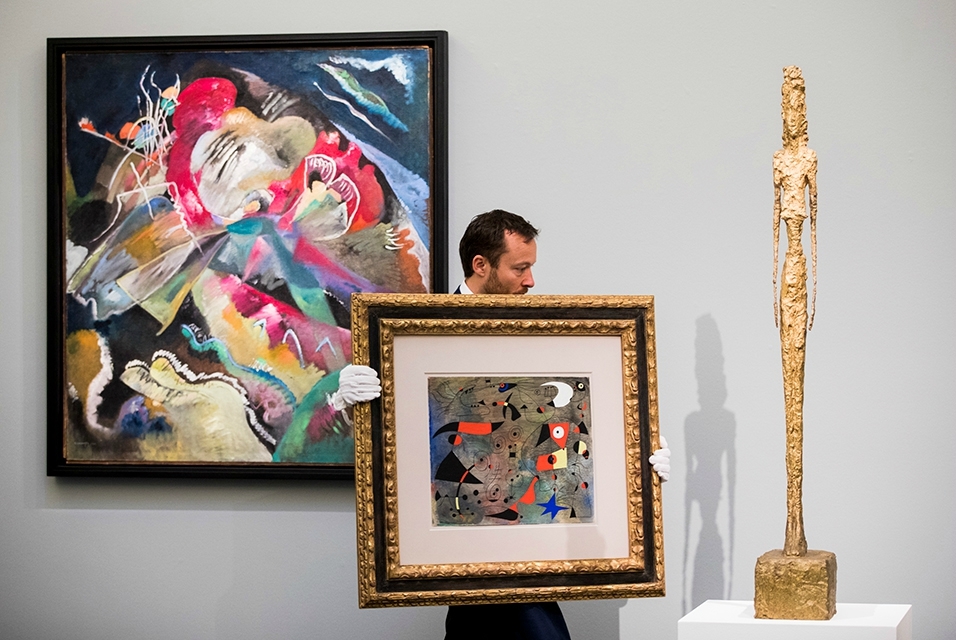Art Market — A Review of the Year
December 21, 2017

As another eventful year draws to a close and postscripts are sought to sum it all up, the headlines will again speak to the extreme health of the market and the wider global cultural calendar. This was a year in which we were truly spoilt for choice: museums around the world put on major blockbuster exhibitions for artists ranging from Michaelangelo to Jasper Johns, the much-acclaimed Venice Biennale showcased the very best of the world’s emerging art, a packed art fair calendar took blue chip art to every corner of the globe, and in just one week over $2bn of art was offered, and then subsequently sold, to a hungry market. In amongst it all, Da Vinci’s Salvator Mundi – almost certainly the highest profile auction lot ever to come to market – made a staggering $450M world record sale.
But what do we at Beaumont Nathan think have been some of the more noteworthy stories of the year?
Firstly, the shape of the market has once again shifted. Last year we concluded that it had very much been a ‘tale of two markets’, with the private market robust on the one side, and the auction market in a state of progressive recovery on the other. Vendors had continued to bring pieces to market but with a clear preference for the lower risk, more discreet private channel over the riskier public auction market. In 2017, driven largely by an increase in general vendor confidence in market conditions, this distinction disappeared completely. A strong trade has been observed in both markets (as highlighted most visibly by the huge auction sales in November) and a swagger has returned into the steps of auction house specialists once again. The prognosis for 2018 is also generally very positive; sales line-ups already look strong up to May (led by Christie’s $500M Rockefeller consignment) and, barring major macro-economic misfortune, we see no reason that 2018 will not be another bumper year.
On the art fair side, the program continued apace in 2017 with over 20 major fairs in the year. This included the three Art Basels and two Friezes, but for the first time added a third TEFAF into the mix. We went to all of them and were struck by how clearly the market can be read by simply turning up and watching the drama unfold; whilst the first morning trading floor feel of ‘Basel’ Basel indicated the fundamental strength of the Post-War masterpiece market, so too in contrast did the quieter corridors of TEFAF Maastricht speak to shift in attention away from the more traditional sectors, and perhaps the demise of that fair. Equally Hong Kong Basel still enjoyed the experimental feel of a new frontier under exploration, but so too a sense of confusion that comes with catering to a (relatively) new breed of consumer needs. The less read into Miami the better.
Two things to watch for in 2018. First and foremost, whilst Christie’s clearly won the PR war in the battle of the auction houses in 2017 (no small matter in the wider consignment and talent war), we suspect they did so largely with the help of a particularly aggressive consignment strategy. A rising bull market tends to make these aggressive deals appear as coups with the benefit of hindsight, but questions remain as to their fundamental profitability and whether the risk is worth it in anything other than perfect market conditions (the Sotheby’s Taubman sale car crash a recent cautionary reminder). With Phillips entering the fray, we only expect the battle to intensify.
Secondly, it is increasingly clear that the core focus of the market has continued to shift toward the modern and post war masterpiece market, and there has been a concurrent weakening of interest in the more traditional categories (although it should be noted that the recent Old Master sales in London were notably stronger than in recent years), and the emergent contemporary sector. This consolidation of the market in blue chip 20th century works was perhaps most obvious at Basel this year where all the clamour typically reserved for the emergent work in the upstairs halls, was bestowed instead on the blue chip works in the main hall downstairs where trade was fastest. This shift has been noted by the marketplace and increasingly facilitated by its infrastructure; Phillips’ inclusion of Matisse and Picasso in their Contemporary evening sales this year was one such successful experiment, as was the re-imagining of Da Vinci as a contemporary brand and Salvator Mundi’s highly successful placement in a contemporary sale. We expect these successes to be built on moving into 2018, and this further consolidation to create an opportunity – for those brave enough to go against the flow – to identify value in areas of the market that shine less brightly.
And on this point, the last word of course must go to Da Vinci; what will be the legacy of this mega-sale? A one-off freak price achieved by a freak picture, or a resetting of the market goalposts and a shift in understanding of what one might conceivably pay to own a masterpiece artwork? We think the top of the market has been stretched further and a new market normal created (as was hinted by Basquiat’s $110M price in May). We are now also convinced that scarcity and brand value have taken precedence over art historical connoisseurship as the key drivers in today’s market. All prospective buyers should factor this into their thinking in the years ahead, we certainly will.
Tom Mayou, Director
December 2017

